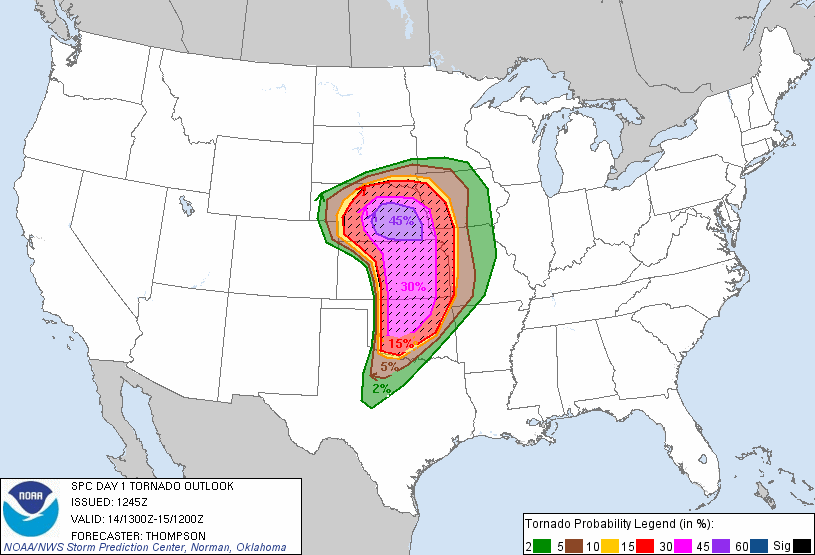What are the chances of a tornado? Understanding Tornado Probability
Tornadoes are one of nature’s most powerful and destructive forces. The violent whirlwinds can cause devastating damage to homes, infrastructure, and even claim lives. As such, many people are eager to know what the chances of a tornado occurring are in their area. While it is impossible to predict tornadoes with absolute certainty, scientists and meteorologists have developed methods to estimate tornado probability based on historical data and weather patterns. In this article, we will explore the factors that influence the likelihood of a tornado, the various tornado probability scales, and what you can do to stay safe in the event of a tornado.
Factors That Influence Tornado Probability
Tornadoes typically form in severe thunderstorms characterized by a unique set of atmospheric conditions. While tornadoes can occur in any country, some regions are more prone to tornado activity due to geographical and climatic factors. Here are some key factors that influence tornado probability:
1. Atmospheric Instability: Tornadoes thrive in an atmosphere with high instability. This is often associated with warm, moist air at the surface, coupled with colder air at higher altitudes. When these air masses collide, they create an unstable environment that is conducive to tornado formation.
2. Wind Shear: Wind shear refers to a change in wind speed or direction with increasing altitude. Significant wind shear can contribute to the rotation of thunderstorm updrafts, enhancing the potential for tornado development. Strong vertical wind shear is often present in regions with a higher likelihood of tornadoes.
3. Topography: The geographical features of an area can affect tornado probability. For example, tornadoes are more likely to occur in regions with open plains, where strong winds can develop and organize into tornadoes more easily. Conversely, areas with mountains or hills can disrupt the airflow and make tornado formation less likely.
4. Time of Year: Tornado season varies depending on the region. In the United States, tornadoes are most common in the central and southern states during spring and early summer when warm, moist air from the Gulf of Mexico interacts with colder air masses from the north.
Tornado Probability Scales
To assess the likelihood of a tornado occurring, meteorologists use various tornado probability scales. These scales provide a standardized way of communicating the potential for severe weather and offer valuable information for emergency managers and the public. Two widely used tornado probability scales are the Enhanced Fujita Scale (EF Scale) and the Tornado Condition Index (TCI).
1. Enhanced Fujita Scale (EF Scale): The EF Scale is a rating system that classifies tornado intensity based on the damage caused by the tornado. It ranges from EF0 (weakest) to EF5 (most destructive). While the EF Scale does not directly assess tornado probability, it provides valuable information about the potential impact and severity of a tornado.
2. Tornado Condition Index (TCI): The TCI is a tornado probability scale that estimates the likelihood of a tornado occurring within a specific area and time frame. It takes into account various atmospheric conditions and assigns a numerical value to indicate the probability of tornado formation. The higher the TCI value, the greater the likelihood of a tornado.
Staying Safe During a Tornado
While tornadoes can be frightening, there are steps you can take to stay safe during a tornado event. Here are some essential safety tips:
1. Have a Plan: Develop a tornado safety plan and discuss it with your family or household members. Identify a safe location in your home, such as a basement or an interior room without windows, where you can take shelter during a tornado.
2. Monitor Weather Alerts: Stay informed about weather conditions by monitoring local weather forecasts and alerts. Invest in a reliable weather radio or use smartphone apps that provide real-time updates on severe weather events.
3. Create an Emergency Kit: Prepare an emergency kit with essential items such as water, non-perishable food, flashlights, batteries, a first aid kit, and a battery-powered or hand-cranked radio. Include any necessary medications and important documents in your kit.
4. Practice Drills: Conduct tornado drills regularly to ensure that everyone in your household knows what to do during a tornado. Practice moving quickly to your designated safe area and reinforce the importance of taking shelter.
Frequently Asked Questions
Frequently Asked Questions
What are the warning signs of a tornado?
Some common warning signs of an impending tornado include dark, greenish skies, large hail, a rotating wall cloud, a loud roaring sound resembling a freight train, and a distinct lowering of the cloud base.
How long do tornadoes typically last?
On average, tornadoes last for about 10-20 minutes. However, some tornadoes can persist for much longer or develop and dissipate rapidly.
Can tornadoes change direction?
Yes, tornadoes can change direction and path. They can be influenced by shifting wind patterns and may abruptly change course during their lifespan, making them even more dangerous and unpredictable.
Are tornadoes more common in certain parts of the world?
While tornadoes occur worldwide, they are most common in the central plains of the United States. This region, often called Tornado Alley, experiences a high frequency of tornadoes due to its unique atmospheric conditions.
Are mobile homes more vulnerable to tornado damage?
Yes, mobile homes are more vulnerable to tornado damage compared to well-built structures. The lightweight construction and relatively weak anchoring of mobile homes make them more susceptible to high winds and flying debris.
Final Thoughts
In conclusion, tornado probability is influenced by various factors such as atmospheric instability, wind shear, topography, and the time of year. Meteorologists use tornado probability scales to assess the likelihood of tornado formation and communicate the potential impact to the public. Remember to have a tornado safety plan in place, stay informed about weather conditions, and take immediate action to seek shelter in a safe location during a tornado event. By being prepared and informed, you can increase your chances of staying safe during tornadoes.
